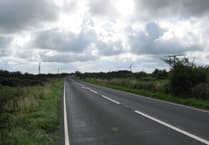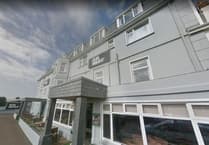ADVANCED public health analyst Rebecca Cohen gave an update on rural poverty at the latest Camelford Community Area Network meeting at Camelford Hall recently.
Poverty is defined in two main ways — absolute poverty and relative poverty. Absolute poverty is defined as lacking the basic means to survive while relative poverty occurs when a family’s income and way of living falls below the general standard of living defined by its society.
She said: “Poverty means different things to different people, it’s a subjective but emotional issue. It’s more complex than just low income.”
Deprivation is an area of contrast with concentrations of visible wealth as well as significant visible and hidden poverty.
Rebecca said: “Deprivation across Cornwall is a persistent problem. The areas in poverty are similar or the same ones for the last 30 years.”
For example, Treneere in Penzance is within the 2% most deprived areas in England while Latchbrook South in Saltash is at 89%.
According to statistics, around 71,450 people, which is 12.7% of Cornwall’s population, live in the 20% of ‘most deprived’ communities in England.
Over 29,500 children (under 19) in Cornwall live in poverty (after housing costs) while in some of the poorest areas, more than one in three children live in poverty.
Rebecca then explained how the Camelford area compares with the Index of Multiple Deprivation (IMD), the official source of information on relative deprivation.
Across the patch, St Teath and Delabole South is the least deprived being in the top 50% while Delabole North, Tintagel, Boscastle and Crackington, Davidstow, Egloskerry and Warbstow and Camelford North are all in the top 40%, although Camelford North was at 50% in 2015.
Crucially however Camelford South is in the 20% across the country, and the poorest part of the community network area.
The IMD scores are ranked on employment, education skills, health and income.
Rebecca then explained the demographics.
Of the whole 13,030 population in the area, just 2,150 are 15 and under while 7,240 are of working age, which is 7.2% under the England average of 62.8%. To show that the network is ageing, there are 3,635 people either 65 or over, which is 27.9% of the population, over 9% higher than the national average of 18%.
Compared to Cornwall as a whole, Camelford have a slightly older population with a lesser percentage of people working.
The average net annual income is £23,600 with the average across the country ranging from 16,800 to 93,800.
The topic of child poverty was next with Rebecca stating: “One of the key things here is that all children deserve the best start to life. This really is a key indicator for us.”
The areas of Camelford, St Teath and Tintagel were all marginally above the Cornwall average of 16.4% before housing costs with St Teath three percent higher and both Camelford and Tintagel five percent higher than the after housing cost county percentage at 29%.
The Camelford CNA also have one of the highest levels of ‘off gas’ households in Cornwall at 97.7%. Of the 73 Middle Super Output Areas in the county, only seven had higher percentages of off-gas than Camelford. In 2017, there were just 147 domestic gas metres in the network.
Rebecca then spoke about health poverty, and premature mortality rates for people dying under the age of 75.
She said: “There’s a much higher rate of circulatory diseases across the network. However there’s a healthy life expectancy. People are living more years with long-term conditions which require more care.
“This results in increases in the demand for, and the costs of, health and social care. As the pensionable age rises, the impact of falling healthy life expectancies will be felt in workplaces across Cornwall and the Isles of Scilly.
“If healthy life expectancy is below the overall life expectancy in an area, then it indicates a population that develops long-term conditions earlier in their lifetime. Consequently, this can lead to both men and women living in poor health for many tears. Figures for 2015 to 2017 show across Cornwall that men are expected to live for 16.8 years in poor health whilst women is 18.9.”
Camelford figures are higher than those for Cornwall as a whole with men set to live for 18.7 years in poor health and pass away at 82.5, while women are set to live for 19.9 years in poor health and live past their 86th birthday.
The last part was discussing housing poverty.
A disproportionately large part of the housing stock in rural areas is made up of owner occupied homes (74.6% to the England average of 64.1%). Conversely, a relatively small share of the rural housing stock is in social rented or private rented housing.
Rebecca brought an end to the presentation by summing up the key points.
She said: “Despite these relatively low levels of overall rural deprivation in Camelford Community Network Area, small distinct pockets of rural deprivation do clearly exist; these can be hidden by the Indices of Multiple Deprivation being calculated at LSOA level.
“The cost of providing services in rural areas is estimated to be significantly higher than the cost of providing services in urban areas.
“Cornwall’s rural population is older than its urban population, and the proportion of older people in Cornwall’s rural population. Population now and in the future.
“Camelford faces common public health challenges along with the rest of Cornwall. These include high obesity levels, smoking, alcohol misuse, poor mental health and an ageing, unhealthy population.
“Whilst life expectancy is increasing, these are not additional years in health. People are living longer with long-term conditions and disability.”
Rebecca thanked everyone for listening before mayor of Camelford, Cllr Claire Hewlett said: “Thank you for coming, I’m very pleased you came this evening.”




Comments
This article has no comments yet. Be the first to leave a comment.